Disclaimer: The following webinar contains sensitive content and was recorded during the COVID Pandemic. This may be triggering to some individuals. Please proceed at your own discretion.
Read Webinar Summary
Comprehensive Guide to Upper and Lower Blepharoplasty: Advanced Techniques and Considerations
Introduction and Expert Background
This comprehensive webinar on periorbital rejuvenation is presented by a distinguished facial plastic surgeon with extensive credentials, having served as chief of facial plastic surgery at Emory University for 12 years. The presentation provides an in-depth exploration of upper and lower blepharoplasty procedures, covering the complex anatomy, diagnostic approaches, and sophisticated treatment options for addressing periorbital aging.
Understanding Periorbital Aging: The Anatomical Changes
Visual Changes with Age
As individuals age, several distinct changes occur around the eye area that contribute to an aged appearance:
- Upper eyelid changes: The skin begins to sag and the upper lids become noticeably heavy
- Lower eyelid alterations: Wrinkles develop and become more pronounced on the lower lids
- Volume depletion: Significant volume loss occurs in the lower lid area, temples, and cheeks, creating a hollow or sunken appearance
The Picture Frame Analogy
The surgeon uses an illuminating analogy, describing the eyelids and brow as a “picture frame” that frames the eye. This conceptual framework helps understand the importance of proper proportions and positioning in achieving aesthetic harmony. An upward slant of the eyes is universally recognized as an attractive quality that contributes to a youthful appearance.
Ideal Eyelid Anatomy and Aesthetic Goals
Upper Eyelid Standards
The ideal upper eyelid configuration includes:
- A clean upper eyelid platform that is appropriate for the patient’s specific ethnicity
- Proper positioning where the upper lid partially covers the iris but never obscures the pupil
- Maintenance of natural ethnic characteristics rather than imposing universal standards
Normal Asymmetries and Ethnic Considerations
Facial asymmetries are completely normal, with one eye frequently being more upwardly angled than the other. Understanding ethnic differences is crucial for successful outcomes:
Caucasian Anatomy:
- Typically possess a 10mm tarsal plate that clearly defines the crease in the upper lid
- More prominent upper lid platform
Asian Anatomy:
- Often have a shorter tarsal plate structure
- Increased fat deposits under the skin
- Different crease formation patterns
Fat Pad Anatomy and Surgical Considerations
Understanding Intraorbital Fat Pads
The intraorbital fat pads serve essential protective functions, cushioning and protecting the eyeball. Surgical intervention must be carefully planned to avoid removing excessive fat, which can result in an unnatural, sunken appearance.
Upper Lid Fat Distribution:
- Two distinct fat pads: Central and medial compartments
- Each requires individual assessment and treatment
Lower Lid Fat Distribution:
- Three separate fat pads: Medial, central, and lateral compartments
- More complex anatomy requiring sophisticated surgical techniques
Tarsal Plate Significance
The height and specific anatomy of the upper lid tarsal plate directly dictate both the height of the upper lid crease and the overall platform appearance. Successful surgery requires sculpting the lid appropriately for each patient’s ethnicity while avoiding the imposition of the surgeon’s personal aesthetic preferences.
Gender-Specific Considerations
Male Blepharoplasty Nuances
Special considerations apply when treating male patients:
- A low brow position in men can be completely acceptable and should often be preserved
- Altering brow height inappropriately can inadvertently feminize the male face
- Maintaining masculine characteristics is crucial for natural-looking results
Functional vs. Aesthetic Benefits
Beyond cosmetic improvements, blepharoplasty can address significant functional issues:
- Relief from irritation caused by heavy, drooping lids
- Improved vision by removing obstructive upper lid skin
- Enhanced comfort during daily activities
The Role of Injectable Volume Enhancement
Strategic Volume Restoration
Injectable volume plays a crucial complementary role in comprehensive periorbital rejuvenation. Key areas for volume enhancement include:
- Tear trough area: Addressing hollowing and shadowing
- Cheek region: Restoring youthful fullness and projection
- Temple area: Countering age-related volume loss
The Vector Concept
Understanding facial vectors is essential for achieving natural results:
- Positive vector: The cheek should sit ahead of the eye plane for a youthful appearance
- Filler strategy: Re-establishing connection between the high point of the lower lid bulge and the high point of the cheek
- Tear trough camouflage: Strategic filler placement can effectively disguise tear trough deformities
Pre-Operative Preparation Protocol
Medication and Supplement Restrictions
Comprehensive pre-operative preparation is essential for optimal outcomes:
- Two-week restriction period for:
- Aspirin and aspirin-containing products
- Non-steroidal anti-inflammatory drugs (NSAIDs)
- Vitamin E supplements
- Fish oil supplements
- All herbal products and supplements
- Contact lens cessation: Patients must avoid contact lenses for four weeks before surgery
Surgical Priorities
The surgeon’s primary focus centers on ensuring proper eyelid closure post-operatively to protect the eyes from exposure and complications.
Lower Lid Assessment and Support Techniques
Laxity Evaluation
Lower lid laxity assessment utilizes the distraction test to determine the degree of lid looseness and support needed. Based on this evaluation, additional procedures may be necessary.
Canthopexy Procedure
When lower lid laxity is identified, a lateral suture canthopexy may be performed:
- Purpose: Tighten and provide structural support to the lower lid
- Technique: Strategic suture placement to restore proper lid tension
- Benefits: Prevents post-operative lid malposition and ectropion
Surgical Goals and Aesthetic Outcomes
Comprehensive Rejuvenation Objectives
The primary goals of periorbital rejuvenation include:
- Brow restoration: Achieving brow shape and position similar to the patient’s appearance in their late twenties or thirties
- Natural eye appearance: Maintaining ethnic characteristics while improving aging signs
- Smooth transitions: Creating seamless lid-cheek transitions without obvious surgical demarcation
Surgical Techniques and Methodology
Upper Lid Surgery Protocol
The upper lid procedure involves precise measurements and techniques:
- Skin assessment: Careful measurement of excess skin requiring removal
- Muscle modification: Strategic removal or repositioning of orbicularis muscle
- Fat contouring: Conservative fat removal or repositioning when indicated
Lower Lid Surgical Approaches
Lower lid surgery employs multiple techniques depending on individual needs:
Skin Removal Approach:
- External incisions for significant skin excess
- Preference for laser resurfacing when appropriate
- Conservative approach to maintain natural lid position
Transconjunctival Technique:
- Internal approach through the conjunctiva
- Avoids cutting through muscle and septum
- Reduces risk of lid malposition and scarring
Advanced Laser Resurfacing Techniques
CO2 Laser Skin Treatment
CO2 laser skin resurfacing provides comprehensive skin tightening:
- Treatment area: From lash line to one finger-breadth below the orbital bone
- Mechanism: Complete removal of outer skin surface layer
- Benefits: Significant tightening of wrinkled and loose lower lid skin
Botox Integration
Strategic Botox administration enhances long-term laser outcomes:
- Timing: Applied to crow’s feet area before laser treatment
- Purpose: Muscle relaxation to optimize healing and results
- Synergy: Combined approach for superior aesthetic outcomes
Post-Operative Care and Recovery
Immediate Post-Operative Protocol
Comprehensive post-operative care ensures optimal healing:
- Incision protection: Application of specialized ophthalmic ointment
- Swelling management: Regular icing protocol
- Scar prevention: Strategic steroid injections to minimize and soften scar formation
Activity Guidelines and Timeline
Recovery follows a structured timeline:
- First two weeks: Walking and normal daily activities permitted
- Six weeks: Gradual return to full activity levels including exercise
- Sun protection: Critical during the initial several months of healing
Assessment Timeline
Professional evaluation follows a specific schedule:
- Six months: First comprehensive aesthetic assessment
- One year: Final healing evaluation and outcome documentation
Patient Partnership and Communication
Collaborative Approach
The surgeon emphasizes the importance of true partnership with patients:
- Focus on patient goals: Understanding and prioritizing individual aesthetic desires
- Happiness priority: Ensuring patient satisfaction with outcomes
- Realistic expectations: Clear communication about achievable results
Long-Term Results and Benefits
Procedure Outcomes
Blepharoplasty provides significant and lasting improvements:
- Upper lid benefits: Complete elimination of upper lid hooding
- Lower lid improvements: Smoothing and tightening of loose skin and muscle
- Longevity: Results can maintain their effectiveness for more than 20 years
- Natural appearance: Properly performed surgery creates subtle, natural-looking enhancement
Functional and Aesthetic Integration
The procedure successfully combines functional improvements with aesthetic enhancement, addressing both visual obstruction issues and cosmetic concerns while maintaining the patient’s natural ethnic characteristics and facial harmony.
Eyelid Rejuvenation
The goal of cosmetic eyelid rejuvenation surgery, also known as blepharoplasty, is to enhance the eyes. This is our most captivating feature and should be highlighted. By reducing the heaviness of the skin around the eyes, the eyes will look refreshed, bright and beautiful.
Upper Eyelid Blepharoplasty
With upper eyelid blepharoplasty, the goal is to reduce puffiness when present and to restore a sharp, ethnically and individually appropriate lid crease and lid platform. Upper lid blepharoplasty is routinely performed under local anesthesia in the office procedure room.
Lower Eyelid Blepharoplasty
For lower eyelid rejuvenation, a reduction of puffiness when present, the removal of excess skin and the reduction of wrinkled skin is the goal. Another important area to address is the tone of the lower lid. If the lower lid is determined to be lax, this will be addressed at the time of the blepharoplasty. Lower eyelid blepharoplasty can also be performed in the office if only skin is addressed. However, if fat is removed, which is done from inside the eyelid (a transconjunctival blepharoplasty) general anesthesia is typically required. The lower eyelid skin can also be tightened and smoothed with a CO2 laser which can also be performed in the office. Eyelid surgery is often combined with other facial rejuvenation surgical procedures such as a face lift, when appropriate.
Lastly, to fully rejuvenate the lower lid, if hollowness is present at the lid-cheek junction (the tear trough) injectable fillers such as Restylane®, Vobella® or Vollure® are used. Dark circles often improve by re-inflating the tear trough. Topical eye creams specifically formulated to treat dark circles are also recommended. Dr. Yellin’s many years of experience allow him to achieve a very natural appearance when performing cosmetic eyelid procedures.
Before & After Photos
*All photos shown are patients of Dr. Yellin and are the property of Marietta Facial Plastic Surgery, Laser & Aesthetics Center. Individual results may vary. Please see full disclaimer.
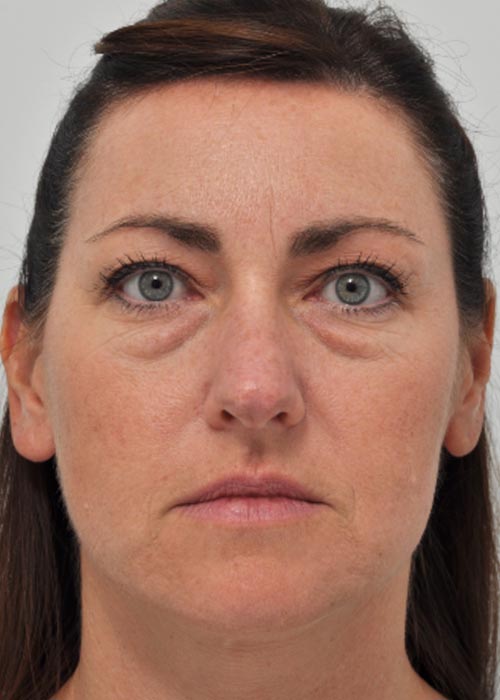
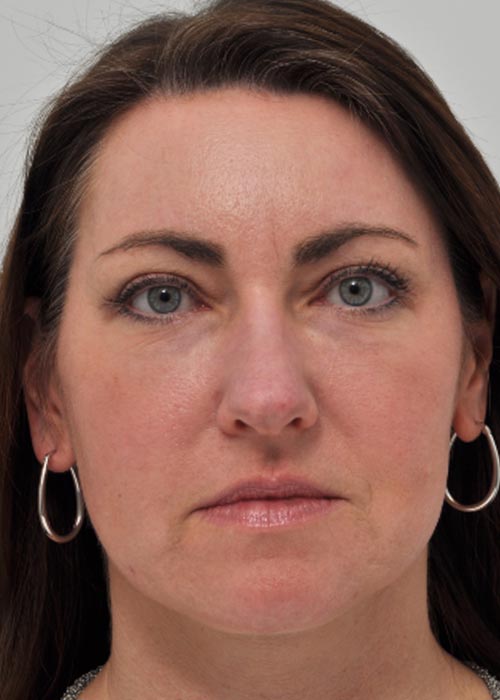
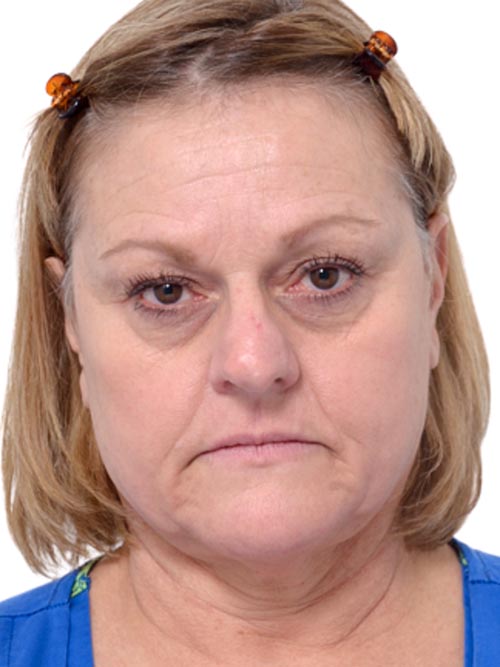
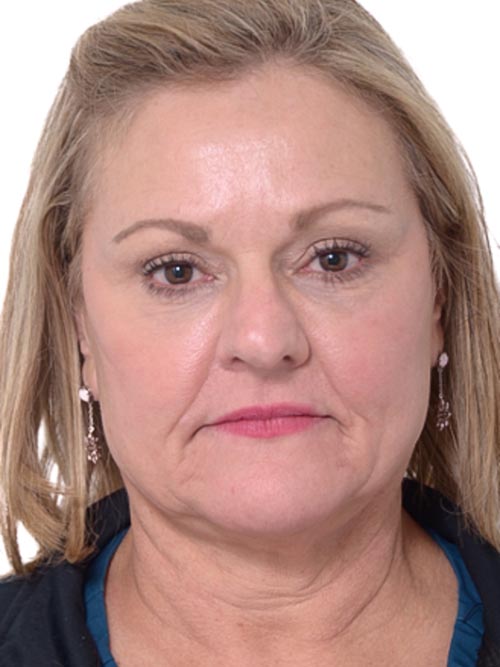
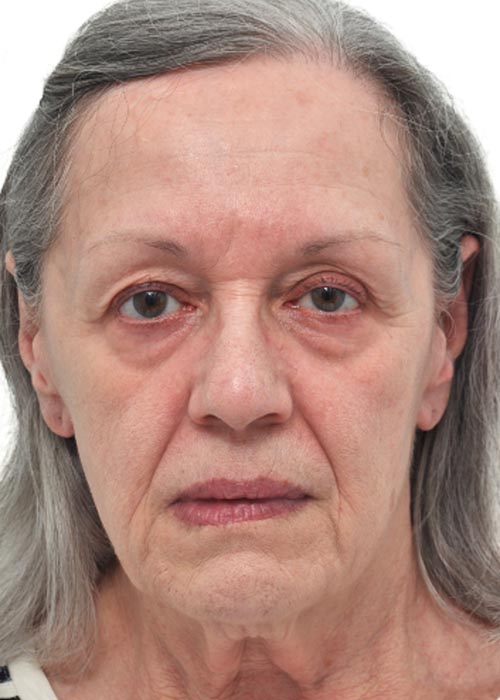
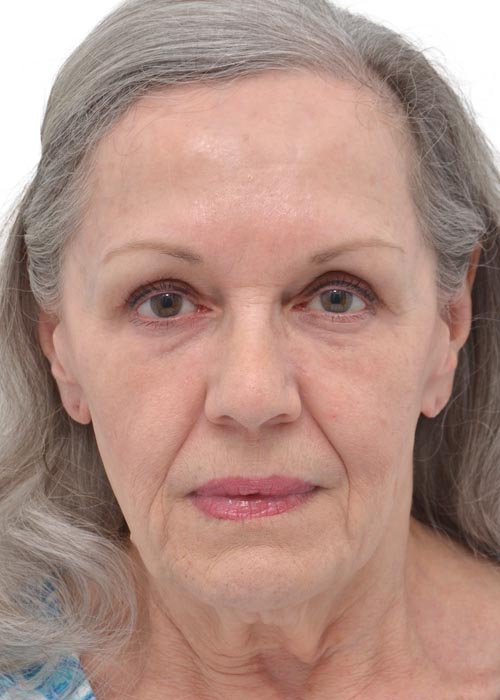
All photographs and other material presented on this website are the property of Dr. Yellin. Please do not download or reproduce the images without the express written consent of Dr. Yellin.
Disclaimer: Individual results may vary. No guarantee of results, stated or implied by any photo or statement on this website can be made. Please see full disclaimer.
Expert Care for Your Eyelid Rejuvenation Journey
At Marietta Facial Plastic Surgery, Laser & Aesthetics Center, we provide expert care every step of the way in your eyelid rejuvenation journey. From your initial consultation to the final follow-up appointment, our skilled team ensures that you are well-informed, comfortable, and confident throughout the entire process. We take the time to understand your specific concerns and aesthetic goals, allowing us to create a customized treatment plan that enhances the natural beauty of your eyes. Utilizing the latest techniques and advanced technologies, we achieve subtle, natural-looking results that refresh and revitalize your appearance. Our compassionate approach ensures a smooth and comfortable recovery, so you can enjoy your renewed look with peace of mind. Trust Marietta Facial Plastic Surgery, Laser & Aesthetics Center to help you achieve brighter, more youthful eyes with precision and personalized attention.
Atlanta & Marietta Eyelid Lift & Rejuvenation
Based in Atlanta, Marietta Facial Plastic Surgery, Laser & Aesthetics Center has been a leading provider of eyelid rejuvenation since 1996. We proudly serve patients throughout Atlanta, Marietta, Acworth, Woodstock, and the rest of the country. To schedule your consultation or to request more information, please fill out the form below or call us at (770) 425-7575.
FAQs
What is the difference between upper and lower blepharoplasty?
Upper blepharoplasty trims or re-positions redundant skin and fat that weigh down the upper lids, reopening the natural crease and brightening the gaze. Lower blepharoplasty sculpts or redistributes under-eye fat and tightens lax skin to smooth bags and hollows. Treating both areas together creates a balanced, refreshed result by lifting heaviness above while flattening puffiness below—all without altering the eye’s inherent shape.
Can blepharoplasty improve my field of vision?
Overhanging upper-lid skin can narrow side or upward sightlines and force forehead muscles to compensate. Removing or repositioning that tissue clears the obstruction, often widening peripheral vision and easing brow fatigue. During consultation, the surgeon measures visual interference and explains how carefully planned lid contouring can improve everyday tasks like reading or driving while simultaneously rejuvenating appearance.
Who is an ideal candidate for blepharoplasty?
Healthy adults bothered by droopy lids, under-eye bags, or loose, crepey skin are potential candidates. They should have stable eye health, realistic expectations, and be willing to follow basic after-care. Conditions such as unmanaged hypertension, severe dry-eye symptoms, or thyroid-related eye changes may require extra evaluation but do not automatically rule out surgery.
Will I have visible scars from blepharoplasty?
Incisions hide within the natural upper-lid crease and either just below the lower lash line or inside the lid, where shadows disguise them. Precise suturing and diligent sun protection help these lines fade to slender, pale marks that are difficult to detect in conversation or photos. Friends tend to notice brighter eyes, not scars.
How is blepharoplasty customized for each individual?
Every eyelid differs in skin thickness, muscle tone, fat bulge, and crease position. A surgeon maps these nuances, considers ethnic and gender aesthetics, and then tailors incision length, tissue removal, and fat sculpting accordingly. Personalization preserves unique character while correcting excess, ensuring results look naturally refreshed rather than surgically altered.
What lifestyle adjustments support smooth healing after blepharoplasty?
Elevate your head while resting, apply cool compresses as directed, and stay hydrated. Eat nutrient-dense meals low in excess salt, limit screen time to reduce blinking strain, and avoid rubbing the eyes. Light walks aid circulation, but postpone strenuous workouts until cleared at follow-up. Shield healing skin from sunlight with large sunglasses.
How does blepharoplasty address under-eye puffiness and bags?
Aging or genetics can let fat pads push forward, creating bags. During lower blepharoplasty, small amounts of fat are trimmed, reshaped, or shifted to fill hollows, smoothing the lid-cheek junction. Tightening surrounding muscle and skin refines contours further, eliminating bulges and softening shadows for a brighter under-eye appearance.
Is blepharoplasty only cosmetic?
No. While many seek blepharoplasty for a rested look, it can also resolve functional problems such as blocked vision, eyelid heaviness, or skin irritation on lashes. When clinical tests document visual obstruction, some insurance plans classify upper-lid correction as medically necessary, though coverage rules vary. Thus, the procedure may deliver both aesthetic and practical benefits.
Why do eyelids develop bags and droop as we age?
Eyelid skin is naturally thin and loses collagen faster than other areas. Over time elastic fibers weaken, causing loose folds. The membrane holding protective orbital fat can also relax, allowing fat pads to bulge forward and form “bags.” Repeated blinking and squinting stretch the underlying muscle, adding heaviness. Genetics, sun exposure, and lifestyle choices can speed or slow these anatomical changes, but everyone experiences some degree of eyelid laxity with age.
What factors influence the longevity of blepharoplasty results?
Genetics, UV exposure habits, and overall skin quality shape post-surgical aging. Consistent sun protection, balanced nutrition, adequate hydration, and smoke-free living help preserve collagen. Although natural aging continues, removed skin and repositioned fat do not simply reappear, so lids usually maintain a refreshed look for many years.
How can I safely resume wearing eye cosmetics after surgery?
Wait until incisions fully seal and surrounding skin feels comfortable—your provider will give a specific clearance date. Use hypoallergenic, easy-to-remove formulas and apply gently without tugging. Fresh applicators and strict product hygiene lower infection risk while tissues finish strengthening during early recovery.
Will eyelid rejuvenation help with dark circles?
If darkness comes from shadows cast by bulging fat or hollow troughs, redistributing fat and smoothing skin can brighten the area. When pigment or visible blood vessels cause discoloration, topical lighteners or vascular-targeted treatments work better. A thorough exam identifies the main culprit so the best surgical or nonsurgical strategy can be chosen.
How does my everyday routine affect long-term outcomes?
Daily sunscreen, UV-blocking eyewear, and moisture-rich skincare guard delicate eyelid tissue. A diet rich in antioxidants, adequate sleep, and disciplined hydration support collagen upkeep. Avoid habitual eye rubbing and manage allergies to prevent mechanical stretching. Such habits collectively help surgical results stay crisp and youthful.
Will blepharoplasty affect my eye shape?
A skilled surgeon enhances natural contours rather than changing eye architecture. By removing excess tissue and subtly reshaping fat pads, blepharoplasty reveals brighter eyes without making them look wider, rounder, or “pulled.” Respecting individual anatomy keeps expressions authentic so observers notice vitality, not alteration.
What should I discuss with my surgeon at follow-up visits?
Ask about any tightness, dry-eye symptoms, or uneven swelling you observe. Review scar-care techniques, timelines for returning to hobbies like swimming, and when to restart contact lenses or eye makeup. Progress photos document healing and let your surgeon tailor skincare or recommend supportive treatments as recovery advances.
How do I maintain my results over time?
Commit to daily broad-spectrum sunscreen and wear protective sunglasses. Incorporate gentle antioxidants, peptides, and mild exfoliants into skincare to support collagen. Stay hydrated, avoid smoking, and consider periodic professional treatments—such as light peels or low-energy resurfacing—to boost renewal. Together these habits help lids remain smooth and vibrant long after surgery.
Is blepharoplasty suitable for both women and men?
Yes. Eyelid aging affects every gender. Women may prefer a softly defined crease, whereas men often want subtler contouring that preserves a naturally heavier lid. Surgical adjustments respect each person’s anatomy and aesthetic goals, delivering results that appear authentic and well-matched to their facial characteristics.
Will blepharoplasty change my eye color or central vision?
No. The procedure modifies only the surrounding skin, muscle, and fat, leaving the eyeball untouched. Temporary blurriness may occur from protective ointments or early swelling, but eye color and primary vision remain unchanged. As swelling resolves, normal sight clarity returns.
Can blepharoplasty help correct asymmetry between my eyes?
Yes. Many people have one lid that sits lower or appears puffier. During blepharoplasty, tissue can be trimmed or repositioned more on one side, harmonizing height and fullness. Perfect mirror symmetry is impossible—natural facial variance exists—but thoughtful adjustments create a noticeably more balanced look when resting or smiling.
Will people be able to tell I had blepharoplasty?
Modern blepharoplasty aims for subtlety. Incisions are concealed in natural folds, and tissue is conservatively adjusted, so friends typically comment that you look rested rather than “operated on.” The refreshed effect draws attention to your eyes themselves, not to scars or altered shape, allowing results to blend seamlessly into everyday interactions.
